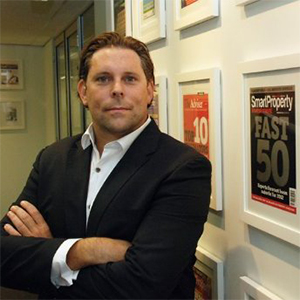BLOG: Huddle in fellow investors, this blog is worth $25k in the open market
Today I want to talk about interest rates. Boring as bat shit? Maybe, but it’s also bloody important. In particular moving variable rates to fixed, why and what to look out for — and how it’s saving us $25,000 a year.

So, in relation to our portfolio, we have a range of rates and they’re all variable rates. We don’t have any fixed at the moment on our portfolio. I think there’s about 19 loans across a portfolio. And just to give you some idea of the range, the lowest is 4.79 per cent and the highest of 5.86 per cent. So, there's a fair bit of margin there between the two.
This means there is a great opportunity for us to look at how we can get those higher interest rates down. And we can do that by either renegotiating the rate directly to the banks, or working through a mortgage broker. We can also shift from an interest-only variable rate to a fixed rate, and therefore get some savings there on interest rate. Or we can shift to a principal and interest rate — fixed or variable — and even get better savings there.
But across our portfolio, our strategy is that we don’t want to start paying down the principal on these loans right now. There is potential for us in the future to do so. The conversations we’re having with our mortgage broker, Ross Le Quesne, is around shifting to fixed rate for two or three years.
Plan
Ross brought up an important consideration too. There are three properties in our portfolio: in North St. Mary’s, Ambarvale, and Port Kembla, that we are looking at to do some potential development or a subdivision or something similar. So we wouldn’t want to look at locking those lines out. We want to keep the rates variable to keep our options open in those cases.
The point is that it’s important to review your properties and say, “What are my plans over the next few years? Is there anything that I’m looking at actually doing on these properties before making a decision in terms of where am I going to fix the rate?” Because once you’re fixed into a loan, if you needed to switch that loan to another lender then there is going to be great costs in breaking that fixed rate. It is important to start with that.
Okay, so we review the ones that were left and we looked at the savings that could be made. On a monthly basis, overall, on the portfolio it was about $2,100 a month — or $25,000 over the year. That’s a significant amount. And there is nothing else that we could do in the portfolio that would give us that sort of savings.
So for this, just given half a per cent on a million dollars in lending is $5,000 a year. So it’s in your portfolio. It’s a large portfolio, so $25,000 annual savings is quite a lot just to do the exercise to review your rates on a regular basis.
This is the biggest impact we can do so there’s pressure. In particular we have one property in Mount Ku-ring-gai, and it’s got $880,000 worth of debt on it. Just by shifting that from its current rate of 5.35 per cent, which is high, we can shift it to a fixed interest only rate of 4.19 per cent. That’s a huge savings, that’s 841 bucks a month or 10 grand a year. So of that whole $25,000 savings, 10 grand of it, so 40-odd per cent, is purely from fixing one property.
Options
And freeing up that cashflow allows us to potentially do some other things. That $2,100 may be reinvested into other projects. For instance, there are a number of potential cashflow shortages on a number of other properties. Looking at that $2,100 dollars a month savings, allows us to potentially grow our portfolio in the same cash flow position that you’re in at the moment.
It’s good to go down this process because once you’ve got this thing ticked off and saving $25,000 it’s going to give a greater balance to our portfolio at a tax position. And then we can start tinkering with the lower hanging fruit, or the stuff which is little bit less impactful. So maybe now we can begin negotiating on increasing our rents a little bit, or negotiating on agents fees or that sort of stuff.
But the question to ask is: are these variable rates going to go down organically, because of the market or because of the banks’ attitude or appetite to bring these rates down? The consensus we had is that no, they’re not going to do it — mainly because lending is as tough as it is right now. So why are they going to incentivise current customers, give them a cheaper rate, when the banks know customers are not going to refinance anywhere else — given that it’s so bloody hard to get mortgages.
So, you can make some assumptions while going through this exercise. But the reality of the current rate environment and the current lending environment is that banks aren’t, for current customers, too willing to negotiate.
